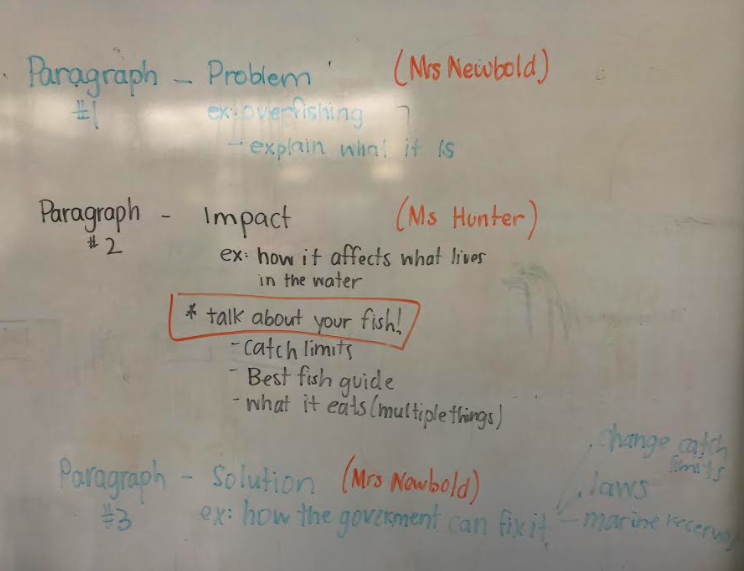7M1 Global Studies
Section outline
-
Welcome to Global Studies
My name is Mrs Newbold and I am your teacher for this subject
During this course we will look at a range of topics to study. We might compare different cultures in the ancient world and their influence on contemporary ideas, customs, beliefs and institutions. We might study current events and search for themes that connect the modern world to that of the past and we will also learn about different research skills that we might need for assignments and assessments.
Our first topic will be looking at what the concept of Taonga is and we will use research skills to locate and find information quickly and accurately.
Achievement Objective
L3 Understand how people view and use places differently
Proposed Global Studies Learning intentions and activities:
Brainstorm what is heritage/taonga? Personal taonga
Introduction to the concept of Heritage sites and role of UNSECO
Define moveable and immovable heritage concepts so that students can understand the meaning, value and types of heritage
Students to investigate and understand that there is a criteria for selecting heritage sites (using international global sites to analyse and discuss reasons for selection using the criteria)
-
We are learning to
- Be organised with our workbooks and equipment needed for Global Studues
- Define what Taonga means to us
Success Criteria
In your Global Studies book you will create a Title page (beginning in one session but completing for homework). it will have the following information:
- Your name
- A title "Taonga/Treasures
- A list of five things that you consider a treasure
- Use three colours of your choice
- Add a border
- Use at least two different fonts/text styles
Add a map of the world to your global studies book
EXPLORE / TŪHURA learning intentions:
- We are questioning what Taonga is?
- We are questioning who decides what Taonga is?
- We are EXPLORING Taonga sites globally around the world.
EXPLORE / TŪHURA learning intentions:
- We are questioning what Taonga is?
- We are questioning who decides what Taonga is?
- We are EXPLORING Taonga sites globally around the world.
-
Learning Intention
We are learning to understand what Treasure, Heritage and Taonga means.
We are learning to recognise the difference between a continent, country and capital city.
Success Criteria
Work in pairs to find and record on the second page of your global studies book,
- The definition of Treasure
- The definition of Taonga
- The definition of Heritage
- Record the information below that gives another view of what 'heritage' means
Glue the copy of this map into your books and follow the key to colour the continents.
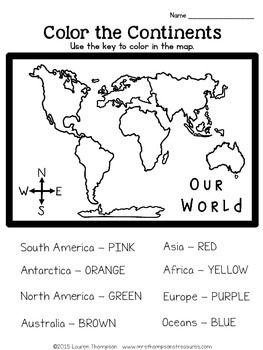
EXPLORE / TŪHURA learning intentions:
- We are questioning what Taonga is?
- We are questioning who decides what Taonga is?
- We are EXPLORING Taonga sites globally around the world.
-
Learning Intentions
We are learning to:
- Consolidate our knowledge of the world in relation to countries, cities and oceans.
- Success Criteria
- Complete the slideshow below to test your knowledge
Task: Find these world heritage sites and label them onto your world map.
- Stonehenge
- Sydney Opera House
- Tongariro National Park
- Ayres Rock (Uluru)
- The Great Pyramids of Giza
- Statue of Liberty
- The Roman Colosseum
- The Taj Mahal
- Grand Canyon
- The Great Wall of China
- Machu Picchu
- Bagan, Myanmar
- Angkor Watt
- Acropolis, Greece
- Borobudur, Indonesia,
- Mesa Verde
- Terracotta Army
- Petra, Jordan
- Mayan Ruins of Tikal
- Chichen Itza, Mexico
Now look at the link below to read about ONE site that interests you. Create a fact page about this site so that you can share your information back to the class.
https://www.planetware.com/world/top-world-heritage-sites-per-1-2.htm
EXPLORE / TŪHURA learning intentions:
- We are questioning what Taonga is?
- We are questioning who decides what Taonga is?
- We are EXPLORING Taonga sites globally around the world.
-
Learning Intentions
We are learning to find and locate famous places around the world.
Success Criteria
Following on from our last lesson, please complete the find and locate task of the famous places listed above. Label them onto your world map that is already pasted into your book.
Then... using the website link in Week 3, choose ONE place that you are interested in and create a fact page about it in your global studies book. You need to include the following information.
- A title (The name of the famous place/site)
- 6 facts about the site (creatively placed around your page)
- a map with the the site pinpointed (glued into your page)
- a picture of the place (glued into your book)
NB . If you are still not sure of how to print the picture and the map off, at least copy and paste them onto a document.
NB. The sites we choose will become part of a big board game that we create for the back wall to display our knowledge so think carefully about the facts you write down as these will become questions.
This is a pre- activity to your final assessment so you get to know what is expected. The outline of your assessment is detailed below in Week 5. Have a look at this and start thinking about the places you would like to visit.
EXPLORE / TŪHURA learning intentions:
- We are questioning what Taonga is?
- We are questioning who decides what Taonga is?
- We are EXPLORING Taonga sites globally around the world.
-
Assessment Time:
The following task will make up your assessment for this term. You are to read through the task again after your teacher introduces it and read through the rubric to understand what is required
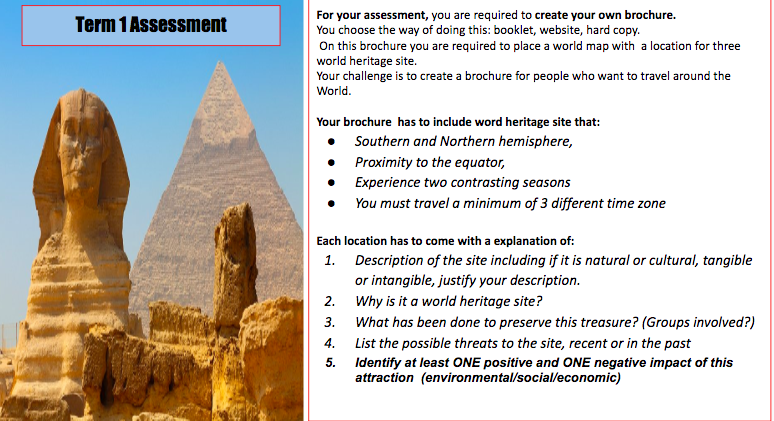
EXPLORE / TŪHURA learning intentions:
- We are questioning what Taonga is?
- We are questioning who decides what Taonga is?
- We are EXPLORING Taonga sites globally around the world.
-
Before you begin your final assessment it is a good idea to investigate what terms such as tangible, natural, cultural, intangible mean as this is important to understand your final assessment.
We are learning to understand
- what UNESCO stands for
- The difference between natural, cultural, tangible and intangible world heritage markers
To Do
Watch the video link to understand the background and behind the establishment of UNESCO.
https://www.nationalgeographic.com/travel/world-heritage/about/
Write the main facts of your findings from the video into your book on one page that has the title UNSECO.
To fully understand and be able to gather information from this link it is a good idea to watch the video two or three times and take notes as you go. You can pause the video while you write facts down.
Definition of Tangible and intangible:
Objects, artefacts, buildings, places and monuments are known as tangible cultural heritage. Tangible cultural heritage has a physical presence. ... This is known as intangible heritage. Intangible cultural heritage are the traditions and living expressions inherited from ancestors and passed on to descendants.
PLAN & DO / WHAKAMAHI learning intentions:
- We are PLANNING to design and create a travel brochure which outlines 3 world heritage sites which folllows set criteria
-
We are learning to
- Recognise that different websites use more than one click to find information
- Use one website but click on multiple tags to find extra information
To Do
- Use the link below to find the following information
- https://whc.unesco.org/en/list/
Look at the list of countries and decide on three world heritage sites to create your travel brochure from.
Now follow the steps.
- Write the three world heritage sites into your global studies book
- Beside each site list whether it is in the southern or northern hemisphere
- Beside each site, list which country it is in.
- Describe whether it is a natural or cultural site
Example:
Statue of Liberty:
- Northern Hemisphere,
- United States of America,
- Cultural site

- Take a screen shot of the heritage site on a map (use the map tab on the UNESCO website to help you to help you find this.
- Finally..... use the description tab and the video tab to read and listen about the site. In your own words write a description of the sight.
Complete these steps with the other two sites you have chosen.
PLAN & DO / WHAKAMAHI learning intentions:
- We are PLANNING to design and create a travel brochure which outlines a description and information about 3 world heritage sites which we can then present to an audience
-
We are learning to:
Plan and create a travel brochure of three world heritage sites around the world.
Checklist to follow for each site....
- Have you described where the site is in the world ?
- Which hemisphere? Which Country? Distance from the Equator?
- When was it made a world heritage site?
- Who looks after the site now?
- What was the reason?
- Is it a cultural or a natural site and why?
- What are some threats to the site?
- Add some interesting facts to your work but these aren't as important as the information above so limit the facts to three or five bullet points.
- What are some positive impacts the site has
-
Create a title page: Wai and Kai not.... Create a colourful title page with this title after the last page of your World Heritage Site unit.
Now....In the back of your Global Studies book, head up a new page that is titled NZ General Knowledge. Each week we will have 10 new questions about NZ. You may use the internet to find the answer while you are at home but once we all get back to school we will be having the quiz as a competition
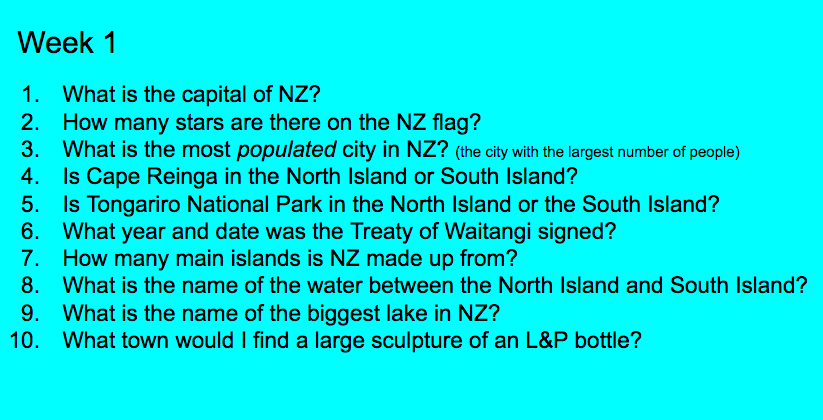
EXPLORE / TŪHURA learning intentions:
- We are EXPLORING... how producers and consumers exercise their rights and meet their responsibilities with regards to the fishing industry of NZ
- We are EXPLORING the impact of overfishing and how this affects both producers and consumers in NZ by investigating a range of resources to retrieve answers.
-
We are learning to:
- recognise what essential items are
To Do:
Open the google slide show link below and have a browse through the slide
https://docs.google.com/presentation/d/1yDc2wl3wm0Vf-xzFsklVvl4qUrZ9AnO2sEklQiaZYbg/edit#slide=id.p
Scroll down to slide number 5,6 and 7. There is an activity about what we should consider important for living that I would like you to complete. Discuss with your parents and then make the table with three headings before putting the objects in the column you think it should go in.
-
PRODUCERS
We are learning: to understand what a producer does
What are a producers rights and responsibilities?
Copy this into your global studies book
'Producers make products in order to make money and consumers are the ones that pay the money to buy these products. Without consumers producers would not make any money and without producers, consumers would not have goods and services to buy.'
Aquaculture is one way that producers of fishing goods can be farmed in a sustainable way.
Watch this video and make up ten interesting facts that you find from either the written text or by watching the video
-
https://www.newzealand.com/int/feature/new-zealands-must-eat-seafood/
https://www.seafoodnewzealand.org.nz/industry/key-facts/
Some questions about NZ fish.
What is NZ's most abundant commercial fish?
How many fish are estimated to be in NZ?
How many different species of fish are there in NZ waters
Why are fish important to NZ?
What is the purpose of the 'Ministry of Fisheries'? -
Recapping on what we have learnt
We are learning to understand what a consumer is
We are learning to differentiate between goods and services, wants and needs
Consumers are users of goods and services
On a new page in your book, write the words "I am a consumer" in the middle of your page. Draw arrows out from the word and add the sub titles, food, technology, clothes, transport and school.
Now, underneath each subtitle brainstorm exactly what you have consumed during the morning up until now and list under the appropriate sub title.
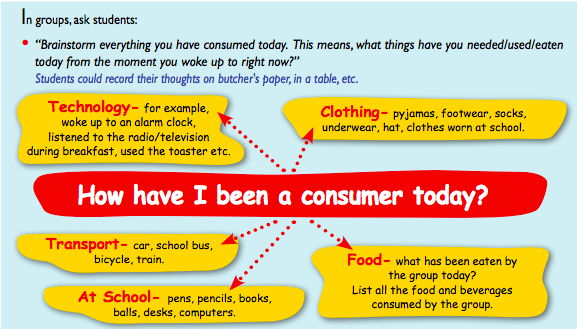
Copy this table down in your book

It’s in the bag. Is it a ‘good’? Is it a ‘service’? Is it both?
In your book, draw a table that has three columns. Give it five rows.
Reading the sentences below, place them in the right column
Going to the hairdressers
Buying a mobile phone and network coverage
Getting a home delivered pizza
Taking a dog to the vet
Buying some cat biscuits for your kitten
A new TV which is ready to go
A TV repairman to come and install the arial
Using the train to go into the city
The Auckland Police
Going to the Dentist
-
We are learning to differentiate wants from needs
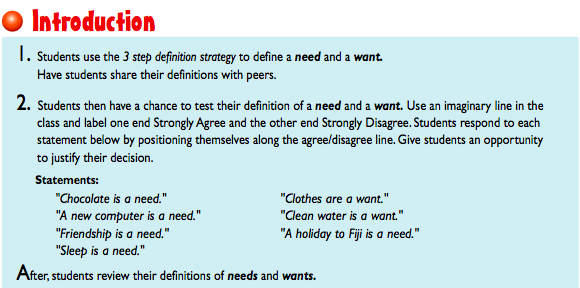
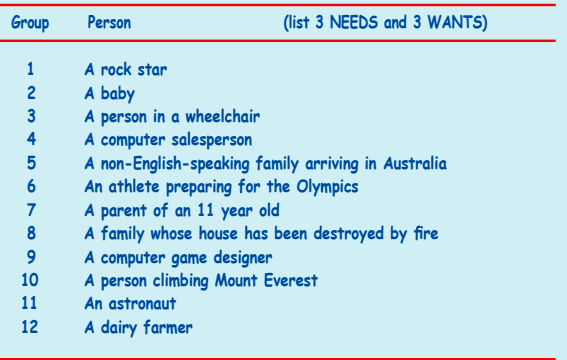
-
We are learning to
- retrieve appropriate information to help create a static image poster
To Do:
- Using these questions and the resource links provided, find the answers to the questions. record them in your Global studies book using either a Sketchnote system or just writing the information down.
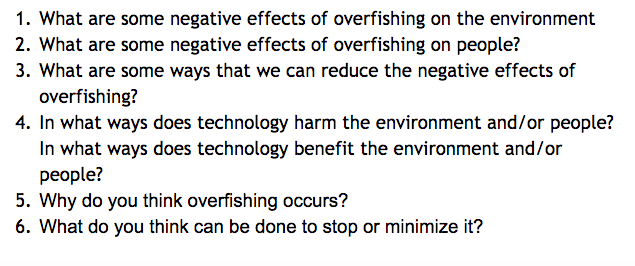
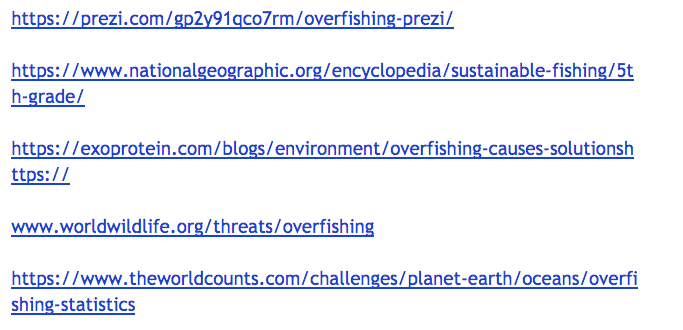
-
We are learning to
- use sketch notes to create a brainstorm page of main facts.
After practising with the overfishing sketch note for overfishing, have a go at using the following facts in a sketch note page.
Make sure you use different symbols , different fonts for key phrases and words. Use all of the page for your facts. Use the information below to create a page about the negative impacts of aquiculture.
Topic: AQUICULTURE: THE NEGATIVE IMPACTS
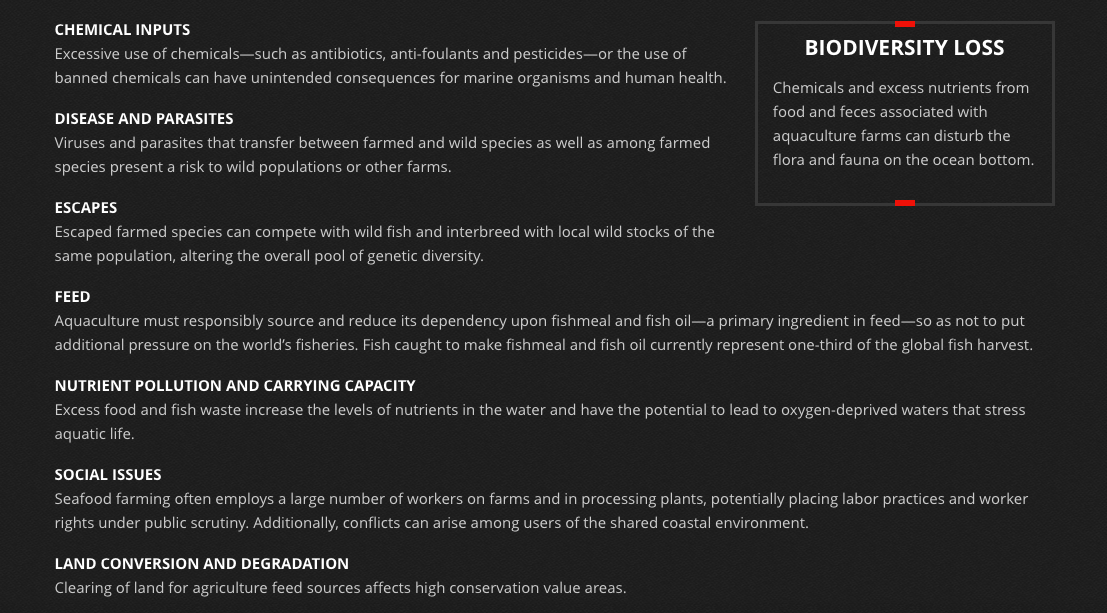
-
This week we are learning to read information to gather ideas for our assessment.

YEAR 7 - Global Studies
Student shows an understanding of the rights and responsibilities of producers and consumers
Criteria
WORKING TOWARDS Curriculum expectation
Working AT curriculum expectation
Working ABOVE curriculum expectation
Working BEYOND curriculum expectation
Producers and Consumers Rights
You have yet to identify the legislation that governs producer and consumer rights and responsibilities in New Zealand fish industry
You have identified the legislation that governs producer and consumer rights and responsibilities in New Zealand fish industry
You have described the legislation that governs producer and consumer rights and responsibilities in New Zealand fish industry
You have provided a detailed description of the legislation that governs producer and consumer rights and responsibilities in New Zealand fish industry
Impact/ Risks
You have yet to identify risks consumers and/or producers could face in the marine life
You have identified risks consumers and/or producers could face in the marine life
You have identified a range of risks consumers and/or producers could face in the marine life
You have described a range of risks consumers and/or producers
face in the marine life
Time management
You have yet to complete and submit your assessment
You have submitted your assessment late
You have submitted your assessment by the date …...
You have submitted your assessment by the date …….
Overall
WORKING TOWARDS Curriculum expectation
Working AT curriculum expectation
Working ABOVE curriculum expectation
Working BEYOND curriculum expectation
- What are the key pieces of information?
- What should we focus on for our assessment?
- How should we record or findings?
-
Questions for Kahoot
What is the best definition for the term consumer?
What is the best definition for a producer?
What is the legal size of a snapper?
How many snapper are you allowed to catch?
What do snapper eat?
What happens to the seafood chain if all the snapper die?
How do most commercial fisherman catch their fish?
How many snapper are you allowed to catch as a recreational fisherman?
What does a quota system mean for commercial fishermen?
What is bycatch?
What is a ‘want’?
What is a ‘need’?
Which is the ‘good’?
Which is the ‘service”?
Which can be both a good and a service?
True or False questions….
A thing which is necessary to your survival is called a want
A thing which is necessary to your survival is called a need
Something like a phone or a PlayStation is an item that you need.
-
Explorers of NZ

Achievement Objective (Level 4)
Understand how exploration and innovation create opportunities and challenges for people, places, and environments.
To DO: Use the following website
https://nzhistory.govt.nz/culture/encounters
Explore the web to find information on Captain James Cook and create an informative document about him. Use the following questions to help your 'fact finding mission' but see if you can add lots of other interesting facts about him
Which country he born in?
What was his main main job before sailing to NZ?
What year did he begin exploring in NZ and where did he travel to?
What do you think some of the challenges were that he faced while exploring?
What information did you find to describe the type of environment they were exploring?
Add a map of where they explored and a picture of him if you can find one.
See if you can add another 4 or 5 interesting facts about his life. Get creative with your presentation and then upload onto the assignment space in google classrooms.
EXPLORE / TŪHURA learning intentions:
- We are EXPLORING...who discovered New Zealand by researching the history of explorers to NZ and collecting key information about them
- We are EXPLORING how early settlers in NZ discovered places by investigating different resources to find the information we need to learn about the challenges and opportunities that faced these explorers
- We are EXPLORING the great walks of NZ by researching about the opportunities that tourism can benefit from by marketing these experiences.
-
Achievement Objective (Level 4)
Understand how exploration and innovation create opportunities and challenges for people, places, and environments.
To DO: Use the following website
https://nzhistory.govt.nz/culture/encounters
Explore the web to find information on Captain James Cook and create an informative document about him. Use the following questions to help your 'fact finding mission' but see if you can add lots of other interesting facts about him
Which country he born in?
What was his main main job before sailing to NZ?
What year did he begin exploring in NZ and where did he travel to?
What do you think some of the challenges were that he faced while exploring?
What information did you find to describe the type of environment they were exploring?
Add a map of where they explored and a picture of him if you can find one.
See if you can add another 4 or 5 interesting facts about his life. Get creative with your presentation and then upload onto the assignment space in google classrooms.
-

Who found what in NZ?
Before we go and see what explorers found where, I think it is important that we do a little bit of getting to know what NZ looks like and where some of the main places in the country are.
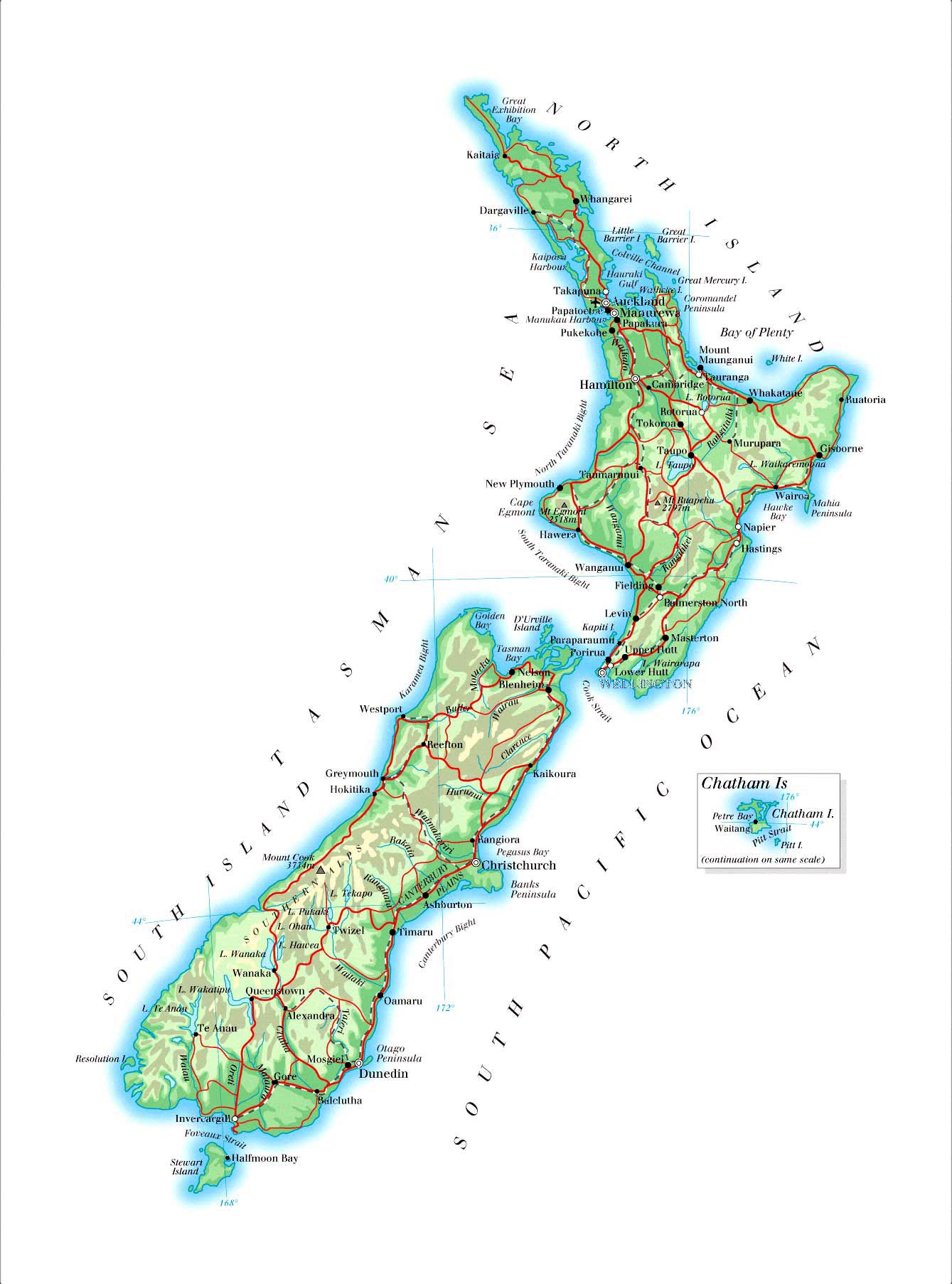
To Do:
Glue these two maps into your global studies book and use the detailed map to find the following places: Use a dot to pinpoint the place and then use a ruler to draw a lone out so that you can label the place.
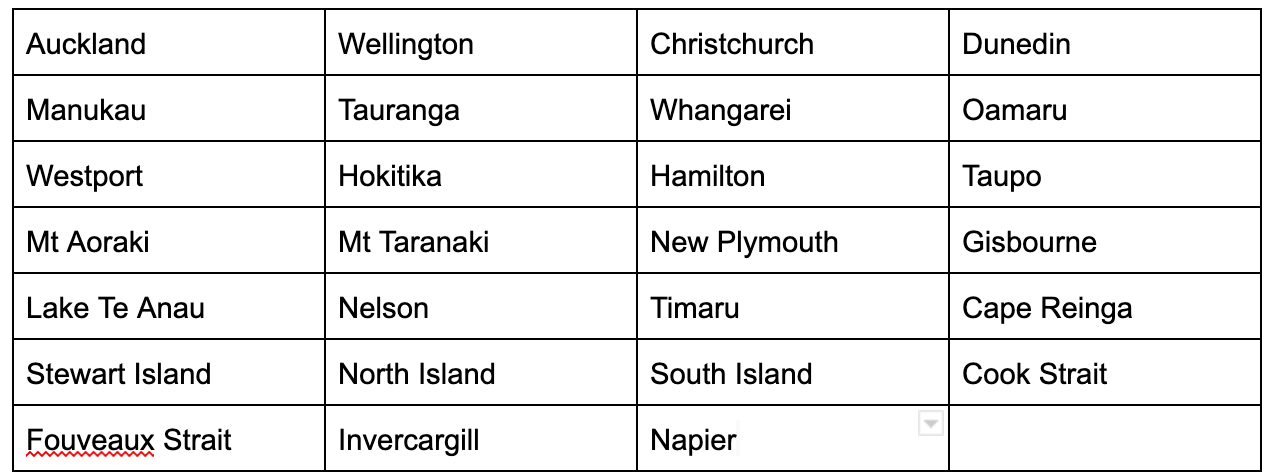
Thomas Brunner had many challenges as he explored
Really hard country to walk through with thick bush and lots of rocks
two mountain ranges to cross
Hardly any food to eat. just birds, eels, fern roots and fish
It rained most days
His guides spoke Maori so he didn't get to speak to many europeans along the way
He had to kill his dog for food
He injured his ankle
he had a stroke and lost the mobility on his left side
FOCUS / ARONGA learning intentions:
- We are FOCUSING...to identify the important facts of Captain James Cook's exploration of nZ and explain the challenges and opportunities he faced
- We are FOCUSING...on transforming our knowledge of Captain Cook's arrival to NZ to a stop animation video to explain the main points
-
Learning Intention:
We are learning to retrieve information from a variety of sources.
We are learning to create a stop motion annimated video
To do: The following websites will help you find information on most of the explorers in the table below. Choose one explorer and answer the following questions about their life and times. If you can't find any information then you will have to type in to google or another search engine some questions about the person you have chosen.
https://natlib.govt.nz/schools/topics/5946ee01fb002c5cf101563b
Have a go at creating a short animation about Captain Cook's landing in NZ
Abel Tasman
Samuel Marsden
Charles Heaphy
Jean de Surville Kehu
Marion du Frense
Durmont D'Urville Andreas Reischek
Henry Williams
William Colenso
Bishop George Selwyn
Federick Tuckett
John F Turnball
Patrick Caples
Ernst Dieffenback
Julius Von Haast
PLAN & DO / WHAKAMAHI learning intentions:
- We are PLANNING... to prepare a google slide show that highlights the great walks of NZ so that we can...share our findings with others in the class
- We are planning to construct a stop annimation video which demonstrates the arrival of Captain James Cook to the shores of NZ so that we can present our research in an innovative way
-
We are learning to refine and rework our stop animation project.
This video is helpful if you have uploaded the stop motion app. It gives you tips and tricks on how to utilise the features.
Criteria checklist for your stop motion animation..."When Captain Cook discovered NZ"
- Do you show the following things in your film. Captain Cook, Endeavour, Pacific Ocean, Maori, land, map of NZ
- Does your film have a good sequence?
- Is your animation of a good quality?
- Have you put some captions in your film to narrate the events and challenges faced?
- Does your
REFLECT / WHAIWHAKAARO learning intentions:
- We are REFLECTING...on the challenges and opportunities created for people who discovered and maintained the great walks of NZ by reviewing the walks and what they have to offer.
-
We are learning to create a' kahoots' based around the knowledge of Captain Cook.
You have been doing some reading and research about Captain Cook. If you have finished your stop animation of his discovery of NZ now have a go at setting up a Kahoots challenge for the rest of the class.
Here are the steps you need to follow and the questions you need to make up answers for are listed below.
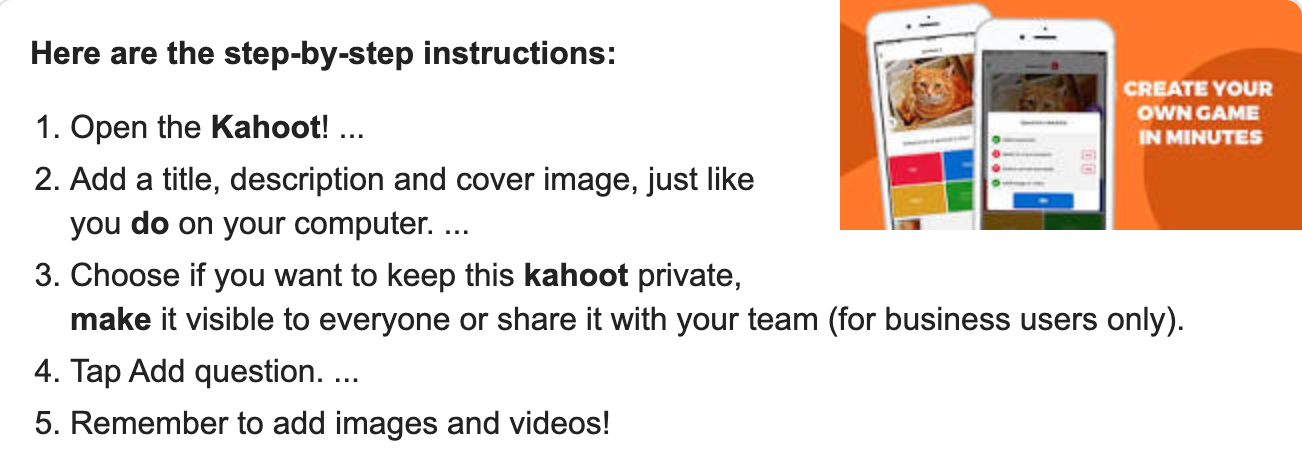
What year was Captain Cook born?
What was his early job before he began sailing around the world exploring?
What was the name of the ship he sailed on when he discovered NZ?
What type of Captain of a ship did his crew see him as?
Why did he travel to Tahiti?
What was his real mission from the British government to try and achieve?
What is scurvy?
What part of NZ did he first land at?
What did he need to make his communication with the local Maori work smoothly?
What was one of the main challenges he faces in NZ?
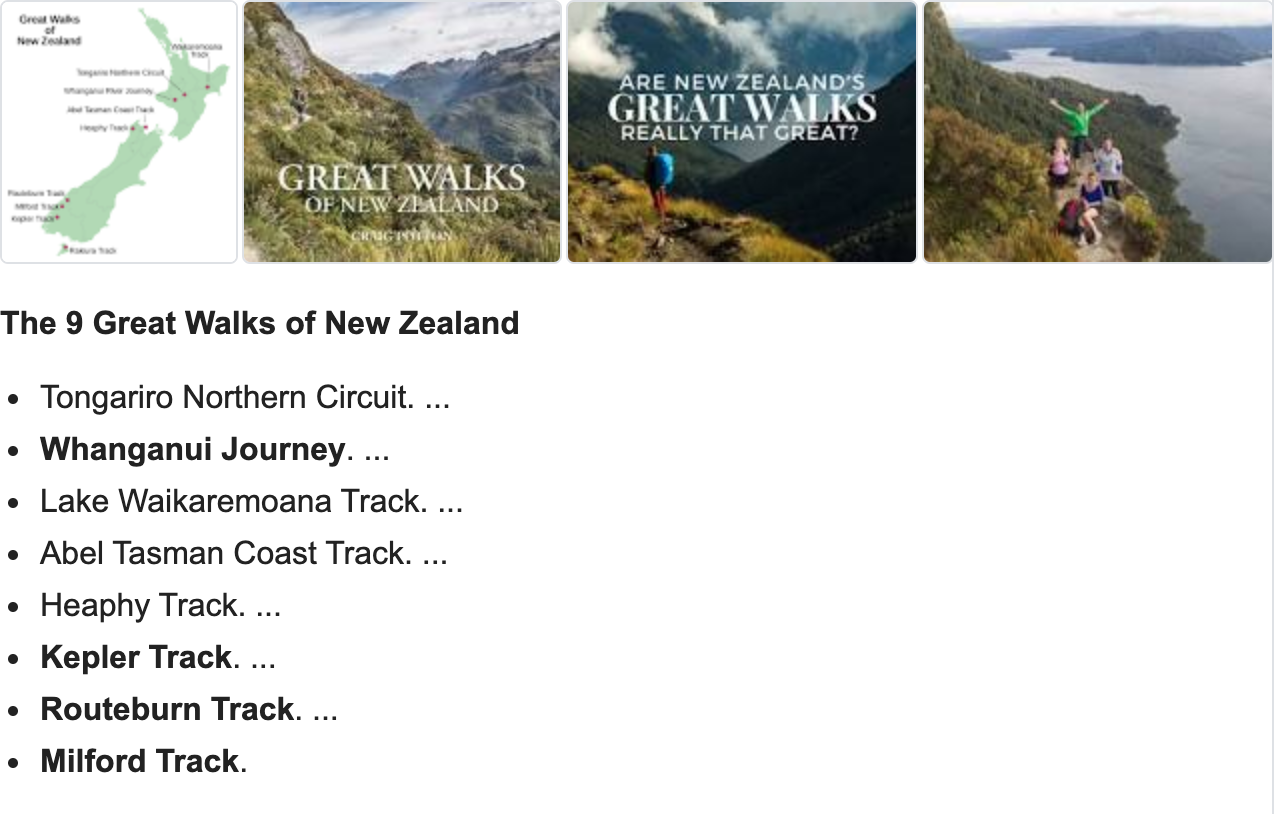
-
Learning Intention: To build a space craft of some sort to display in our class and begin our unit on Space Exploration.
Look at this video to get some ideas for your own space rocket. We just want to focus on the shape you want as they will be spray painted with silver paint before displayed in our classroom
Learning Intention: To test our knowledge about space by answering short quizzes set by the teacher.
Learning Intention: To learn how to locate information quickly using key words and different search engines
-
Learning Intention: To think of as many facts about space exploration as you can think of and then think of some questions to find answers to.
Task:
Make a document in your global studies book. Use rockets, planets, moons and stars to create a space font title which says 'Space Exploration'. at the top of your page if you haven't got your global studies book maybe use a piece of photocopy paper.
Make a title saying "Brainstorming what I know " in the centre of your page
List as many different facts that you already know about space. It can be anything related to space exploration, planets, suns, moons, stars, galaxies, people and rocket launches. (We will count up how many facts you know and the winner will get a prize
Now think of three questions to do with Space exploration and write them down.
Choose one of your questions to investigate further and write up as much information that you think is interesting. Write the information in short sentences.
The following space quiz is to give you ideas to think about before we start doing research. You can use google to find the answers if you would like. On a new page, write 'Space Qui'. Answer the following 16 questions as best as you can.
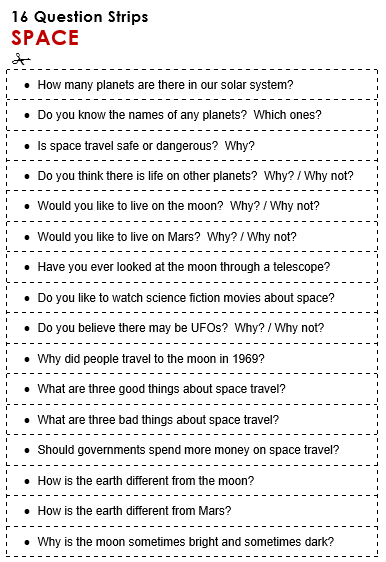
-
Astronomers in History
We are learning about the relevance of the discoveries certain astronomers and scientists in history have made and the relevance they have had on our world today.
Task:
Read the information provided by your teacher about the different astronomers over the years that have influenced the science of astronomy. Choose one to create your own informative poster about.
-
Learning Intention: We are learning to find relevant information from a variety of texts and present it in our own words to create an informative poster.
Task:
Famous Astronomer Assignment
You have been introduced to a number of famous astronomers and scientists from history. These people have made huge discoveries about the planet and universe we live in. Your mission is to choose one person from the list and design an informative poster. It should tell the audience reading it that the following information
What Discovery did that person make
What were the most important years of their work and findings and what were they?
What culture-historical era was that person from?
Why were they curious?
Why is it important about the thing they discovered?
What were the challenges they faced?
Add a timeline to your poster of the important findings of this scientist/astronomer

